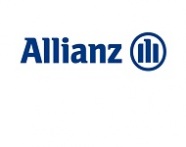What is the impact of high inflation on insurance

Authored by Allianz
"Whilst breaking a record is generally cause for celebration, there’s been little to celebrate about the recent record inflation rates in the UK. UK inflation reached its highest level for 40 years, hitting 10.1% in October and is expected to remain above this figure for the next few months. Both businesses and consumers are feeling the impact on their coffers, which is subsequently influencing their insurance purchasing decisions. The industry is facing a significant challenge – how to demonstrate its true value at a time when customers are looking to cut costs." Nick Hobbs (pictured), Chief Distribution & Regions Officer, Allianz
What's causing high inflation?
Whilst a number of factors are contributing to the current economic situation, a key influence is the ongoing war in Ukraine. This has led to global rising energy prices as Europe looks to relinquish its dependence on Russian oil and gas. Additionally, the financial sanctions issued against Russia have severely dented the UK’s economy, to the tune of £6.2bn.2 These challenges have further compounded the issue of diminished supply against rising demand as spending increased following the Covid-19 lockdowns.
What's the impact on the insurance industry?
The industry is seeing claims inflation across all lines of business. In motor, the increased cost of labour and parts, linked to advances in vehicle technology, has driven up the cost of vehicle repair. Furthermore, supply chain disruption and labour shortages have resulted in delays in vehicle repairs, leading to a higher demand for courtesy and hire vehicles. As a result, some insurers have had to foot the bill for credit hire and credit repair services.
It’s a similar story in the property and construction sector, which is suffering from rising construction material prices and supply chain disruption. The greatest price increases seen in the 12 months leading up to August 2022 were for gravel, sand, kaolin and insulating materials
Project delays arising from these factors have the potential to drive up business interruption claims. Rebuild costs are also escalating for many reasons: increased fuel prices needed for transportation of materials; climbing energy costs used in the production of wood and steel and higher wages for construction workers against a backdrop of a shortage of labour. The BCIS house rebuilding cost index, which is used for updating sums insured, grew by 9.4% between October 2021 and October 2022.
In response to the current economic climate and claims inflation, insurers are focussing on rate strength, inevitably leading to increased premiums for customers.
What's the impact on customers?
Customers are seeing their premiums rise without necessarily understanding all the reasons why. They may not be aware that insurers use index linking to help combat the issue of underinsurance. This is the process of referencing various indices, including the Consumer Price Index (CPI) and Retail Price Index (RPI), to ensure an asset’s value is adjusted in line with changes in inflation and the cost of living. Generally this sees the sum insured increase in line with economic changes. Whilst the policyholder will only see a price change at renewal, most policies are index linked on a monthly basis.
At a time when many policyholders are already struggling with the increased cost of living, there are concerns that insurance will be a key area where people look to save money. In July, the Financial Conduct Authority (FCA) warned that customers may cut or cancel insurance policies, potentially leaving them underinsured 5 and reminded firms of their responsibilities of treating customers fairly . Indeed, the Chartered Institute of Loss Adjusters estimates underinsurance to be present on over 40% of claims 6.
Where it transpires that a customer is underinsured there are several potential consequences. Firstly, the amount they can claim may be reduced, meaning they cannot claim for the full loss. They may also find themselves subject to the ‘average’ rule. This is where the insurer reduces the settlement by the same percentage by which the asset is underinsured. Either way, the customer is left out of pocket.
Another consideration is the indemnity period, particularly for Business Interruption cover. It’s reported that most businesses require at least 24 months to recover their trading position7 and any delay following a loss which exceeds the indemnity period can lead to additional uninsured costs, plus loss of revenue. Unforeseen delays can occur for a number of reasons, including waiting for planning permission, property reinstatement, lack of materials or supply chain disruption.
Case Study - Manufacturing Risk Fire
The policyholder’s business is a metal fencing and gates manufacturer. They are tenants of the building in an industrial park of a small town.
They purchased contents and stock cover. The stock sum insured was £1,000,000 – an accurate reflection of the amount of stock on the premises - and the contents sum insured was £2,000,000.
A fire caused extensive smoke damage to the unit, amounting to £500,000. There was minor damage to stock as this was located in a separate area.
The total stock claim was £50,000 bringing the overall claim to £550,000.
Whilst the cleaning and decorating of the premises was covered under the policy, unfortunately the customer had underestimated the total value of the contents, decorations and fit-out. The total reinstatement cost of the contents was actually £4,000,000.
Result
The policy was subject to the average clause meaning that the contents claim was proportionately reduced. As the sum insured was only 50% adequate, the contents payment was reduced by 50% to £250,000. Added to the stock payment of £50,000, the overall settlement the customer received was £300,000. Had the contents sum insured been accurate, the customer would have received £550,000 – leaving them with a shortfall of £250,000.
Summary
With no sign of the current economic crisis easing, the insurance industry has much work to do in remaining relevant and valuable to customers. Brokers can help customers by explaining the relationship between inflation and underinsurance and the importance of having the correct sums insured and sufficient indemnity periods. Insurers must continue to prove their worth by providing good advice, offering great products and propositions and a fair and efficient claims service. In a time of volatility, we need to provide reassurance.
About Allianz
Allianz Insurance is one of the largest general insurers in the UK and part of the Allianz Group, a leading integrated financial services provider and the largest property and casualty insurer in the world.
The mission of Allianz Insurance is to be the outstanding competitor in our chosen markets by delivering products and services that our clients recommend, being a great company to work for and achieving the best combination of profit and growth. We aim to achieve this by putting the customer at the heart of everything we do.
Allianz is able to offer customers a wide range of products and services including home and motor and commercial insurance with full range of products and service for sole traders' right up to large commercial organisations.
Allianz Insurance employs over 4,500 people across a network of 20 offices in the UK and the company’s Head Office is situated in Guildford, Surrey. Our heritage and financial strength help make Allianz what it is today; a safe and trusted partner. Over 40 FTSE100 companies partner with Allianz. youTalk-insurance sharing Allianz Insurance news and video

